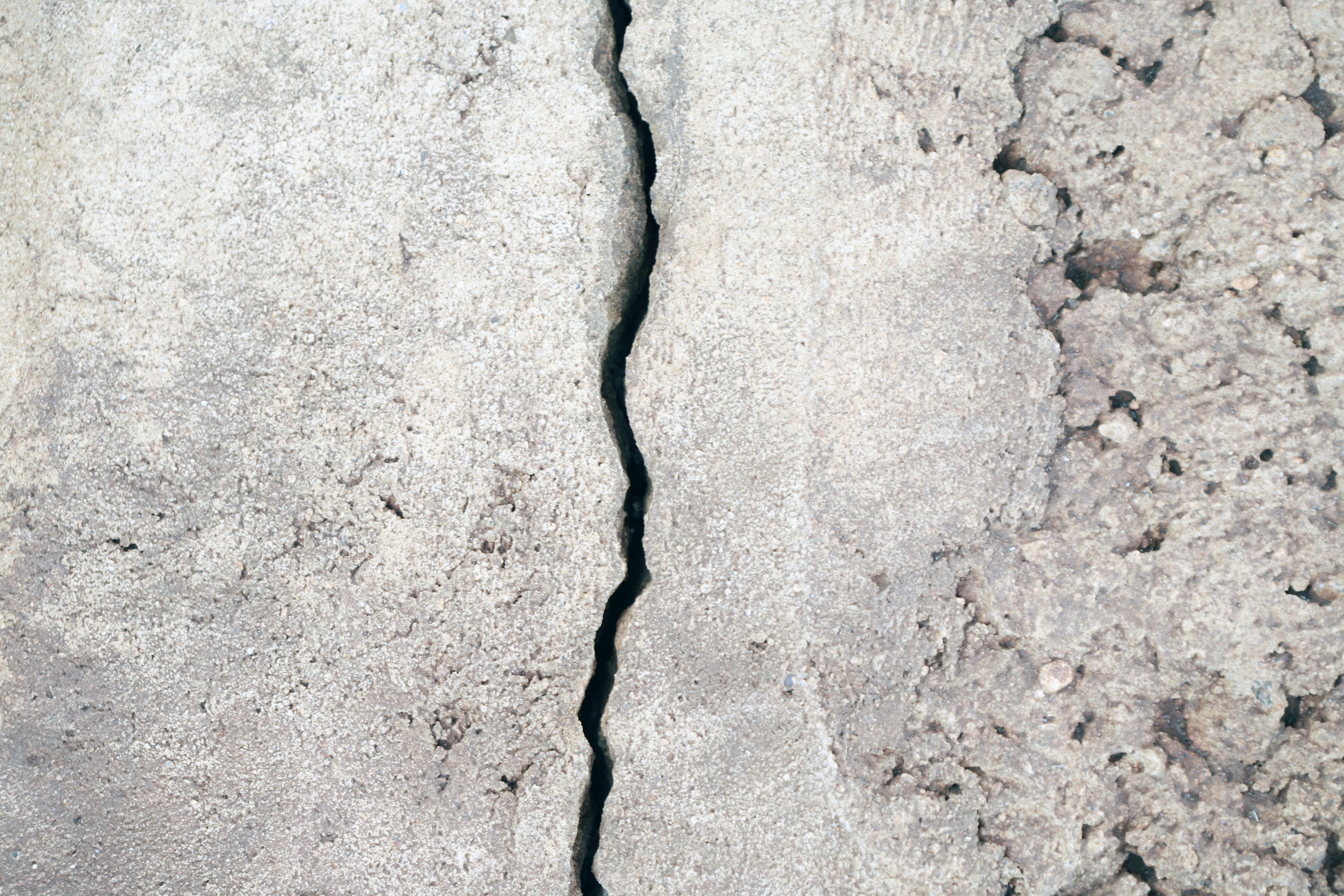Wide cracks in concrete are best patched and sealed with a concrete patching compound. Smaller cracks, less than 1/4 inch wide, can be repaired with a concrete caulk or liquid filler. Patching compounds typically are mixed with water and applied with a trowel. They have a texture similar to grout and can be smoothed and textured to blend with the surrounding area. However, the color of the patch will look like new concrete and will not match the old concrete. Hiding the patch completely requires painting the surface with an appropriate concrete paint.

How to Repair Wide Concrete Cracks
The secret to fixing wide concrete cracks is to undercut the sides of the crack to give it an inverted 'V' shape. This helps the repair material to 'key' into the crack, creating a mechanical bond in addition to the chemical bond between the patch material and the concrete.
- Chisel the crack with a hammer and masonry chisel to widen the base of the crack and to dislodge any loose material from the old concrete.
- Remove all debris from the crack, using a wire brush. If desired, clean the crack with a pressure washer or a garden hose and spray nozzle.
- Remove all water and debris from the crack with a wet/dry shop vacuum or a brush. Work carefully to remove all dust and grit from the crack. It's OK if the surfaces are wet, but there should be no pools of water.
- Mix the concrete patching compound, following the manufacturer's directions.
- Trowel the compound into the crack. Stab the trowel into the compound to remove air pockets and help work the patching material deep into the crack. Fill the crack up to the surrounding concrete surface.
- Smooth the surface of the patch with the trowel, feathering the compound into the surrounding concrete.
- Brush the surface of the patching compound with a dry paintbrush to texture the surface, if desired.
- Let the compound cure as directed.
- Paint or seal the surface of the patch and surrounding area, if desired.
How to Repair Narrow Concrete Cracks
Narrow concrete cracks can be filled using masonry crack elastomeric filler that can be applied with a caulking gun. Alternatively, many products come in bottles with an applicator tip. Very small cracks, such as hairline cracks, can be repaired using a vinyl concrete patching compound applied over the crack and then smoothed with a putty knife or trowel. For hairline cracks, applying repair caulk or crack filler over the cracks usually is not effective, as the caulk tends to peel off of the surface over time.
4) There are two ways that chemical reactions can crack concrete. The first is because the concrete itself contains aggregates or cements that simply are not compatible. This isn’t something you should be too concerned about because the manufacturer of the concrete should already know which of these is an issue in your area. How to Eliminate Cracking When Casting Concrete Planters When pouring and making concrete planters, you may occasionally discover cracks and fissures appearing in your finished piece. Many times these cracks are superficial and will not largely impact the strength and durability of your planters.
How To Keep Concrete Patio From Cracking
Narrow cracks can be deep, often extending through the entire thickness of the concrete slab. Therefore, it's a good idea to start the repair by stuffing foam backer rod into the crack to create a base to hold the repair material. Backer rod is solid in a variety of sizes; use a rod diameter that is slightly larger than the width of the crack. Stuff the backer rod into the crack with a screwdriver to a depth of 1/4 inch. Fill the crack with the repair material, following the manufacturer's directions.